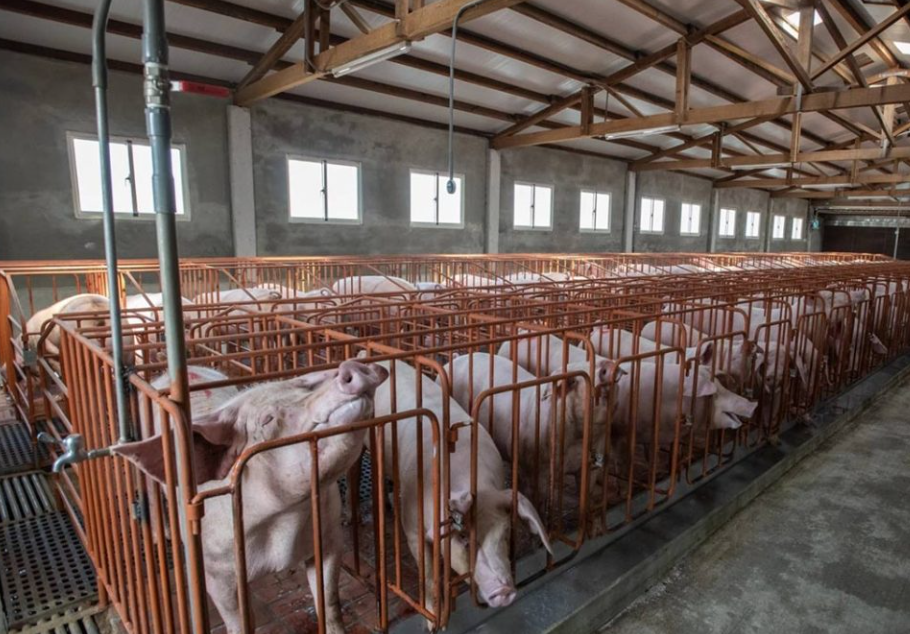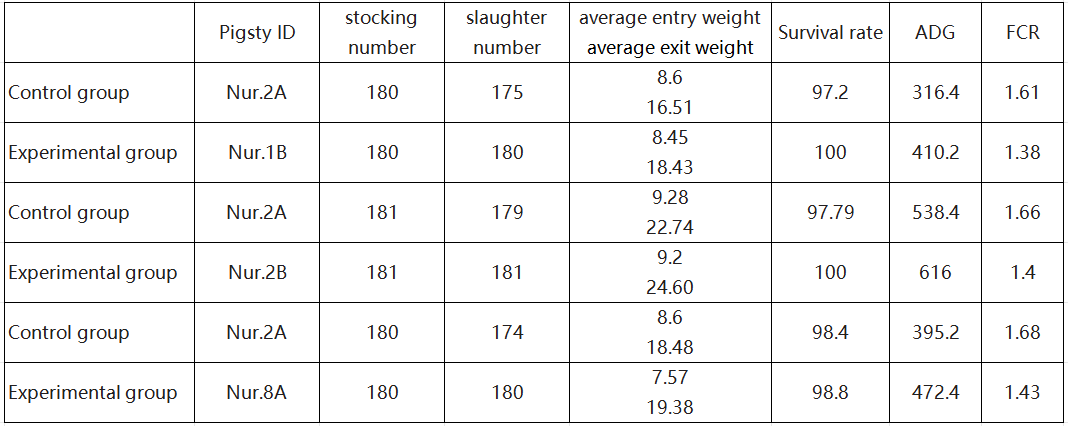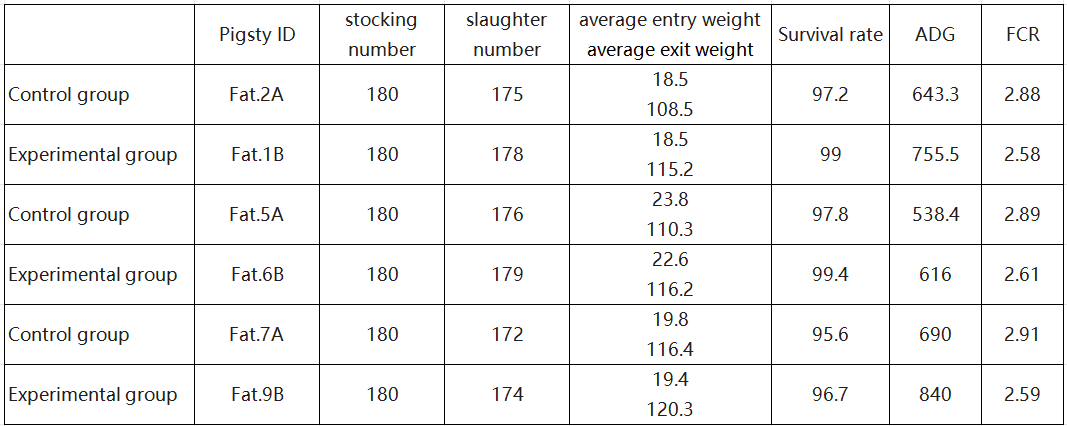Research of LED Swine Light Source in Pig Farming

Directory:
I. Principles of Light Pig Breeding Technology
2. Experimental Design
3. Test Results and Analysis
4. Conclusion
As industrial pig farming has expanded and diseases like African swine fever have emerged, there has been increased focus on environmental factors such as air quality, light, temperature, and humidity in pig farms. However, the role of light in pig farming is often neglected. Light not only has effective bactericidal properties but also influences animals' metabolism, daily behaviors, growth cycles, and reproductive performance, all of which are crucial for their development. Typically, pig housing utilizes both natural light and artificial supplemental lighting. With the growth of large-scale pig farms and the challenges posed by swine fever, many pig houses are now large and fully enclosed, relying primarily on artificial lighting systems. Consequently, the use of LED lighting to regulate pigs' growth rhythms, enhance growth rates, and lower mortality has become a significant topic in the industry.
The author investigated how different light spectra and formulas affect pigs at various growth stages and created an LED light source specifically for modern fully enclosed pig farms to enhance pig welfare and support their growth. Using the Led swine light source, various lighting experiments were conducted in nursery pens, fattening pens, reserve sow pens, and farrowing pens to analyze the effects of the LED swine light source on pigs at different stages and to evaluate the benefits.
I. Principles of Light Pig Breeding Technology
1.1 Pig Vision
Pigs and humans have distinct differences in their photosensitivity. The human eye is most responsive to light at a wavelength of 555 nanometers in bright conditions, while pigs can perceive a visible spectrum ranging from 380 to 694 nanometers. Pigs have dichromatic vision, possessing two types of cone cells that allow them to differentiate colors, with peak sensitivity at 439 and 556 nanometers. Their panoramic vision spans 310°, enabling them to detect threats and react promptly. Additionally, pigs can perceive ultraviolet light in the 350-400 nanometer range but are unable to see red light, meaning their retinas can detect ultraviolet wavelengths but are blind to light beyond 650 nanometers.
1.2 Principles of Lighting Technology Effects on Pigs
The impact of lighting on the growth and development of pigs is quite intricate.
(1) Stimulating the Optic Nerve
Pigs utilize their vision to perceive light and identify external objects, which aids in selective foraging. When light hits their eyes, it excites the retina, stimulating photoreceptors that convert light signals into nerve impulses. These impulses travel via the optic nerve to the visual center in the cerebral cortex and then to the hypothalamus, prompting the thalamus to release melatonin, which regulates the pigs' behavior and biological rhythms.
(2) Effects on the Hypothalamus (Pineal Gland)
Stimulation of the hypothalamus leads to the secretion of hormones such as gonadotropin (GnRH), thyroid-stimulating releasing hormone (TRH), and adrenocorticotropic hormone (ACTH). These hormones influence the anterior pituitary gland through the hypothalamic-pituitary portal circulation. Notably, GnRH regulates the secretion of various hormones, impacting behavior and rhythms. Light energy also affects the pineal gland via the optic nerve, reducing melatonin production, which in turn prompts the anterior pituitary to release hormones like follicle-stimulating hormone (FSH), luteinizing hormone (LH), thyroid-stimulating hormone (TSH), and ACTH. These hormones target the gonads, thyroid, and adrenal glands, respectively, stimulating them to produce hormones that directly influence growth, development, and reproductive capabilities.
(3) Stimulating the Skin and Affecting Subcutaneous Glands
Illumination allows some light to penetrate the epidermis and dermis, reaching subcutaneous tissue. This light influences the glands in the subcutaneous layer, leading to hormone secretion that affects hematopoietic functions, alters the physiological state of pigs, enhances immunity, improves sleep, and promotes growth.
2. Experimental Design
2.1 Design of Artificial Light Source
Following the principles outlined above, the study examined how various light spectra and formulas impact the growth stages of pigs. To address the challenges faced by modern fully enclosed pig farms, an independent development of an LED swine light source was created to help regulate the growth rhythm of pigs and enhance their growth. The author utilized the Led swine light source to perform illumination tests on pigs at different growth stages, aiming to investigate and analyze the effects of this light source on their development. The led swine light source primarily incorporates two specific light bands: red light and ultraviolet light.
The red LED emits light at a wavelength of 660 nanometers, which is largely undetectable by the photoreceptors in pigs' eyes. As a result, exposure to red light does not trigger a stress response in pigs, promoting their growth and development. Additionally, red light can penetrate the epidermis and dermis to reach subcutaneous tissue, positively influencing the body's blood production functions, enhancing the physiological condition of pigs, boosting their immunity, and consequently lowering disease incidence while improving growth metrics.
The ultraviolet LED employs two bands of ultraviolet light combined with titanium dioxide (TiO2) nanomaterials, utilizing Peking University's advanced epitaxial wafer technology, substrate technology, and LED packaging technology to create a distinctive UV light product solution. The UVC band light is effective in eliminating viruses and bacteria within a 50 cm irradiation range. However, due to the nature of ultraviolet light traveling in straight lines, disinfection can leave areas untreated. The incorporation of titanium dioxide nanomaterials effectively addresses this issue. The underlying principle is illustrated in the following formula:

Titanium dioxide nanomaterials generate ozone when exposed to UVA ultraviolet light, which helps decompose ammonia, purify the air, and sterilize surfaces. The ozone levels are maintained at 0.008 mg/m3. as higher concentrations can lead to adverse effects like respiratory issues, while lower levels may not be effective for sterilization and disinfection. Ozone has excellent diffusion properties, allowing for thorough sterilization without any blind spots, and it can also eliminate odors in homes. The lamps are positioned approximately 1.8 meters high, ensuring effective sterilization and disinfection without hindering the growth and development of pigs, thus creating a comfortable living environment for them.
2.2 Experimental Design
This research collaborated with various pig farms in different regions to carry out experimental demonstrations. The pigs were organized into different pens (nursery, fattening, sow, and farrowing pens) for light feeding trials. Each pen was divided into two experimental groups: one with only artificial LED swine light sources and the other with only natural light, with three replicates for each group. The lighting duration was regulated by a clock controller, and the lamps were installed at a minimum height of 1.8 meters. The experimental protocol is detailed in Table 1.
table1 Experimental protocols for different pig pens
(1) Nursery pens
Two pig pens were chosen, one for the experimental group and the other for the control group. In the experimental group, lamps were positioned 1.8 meters high, spaced 2.5 meters apart. Lighting was provided during two designated time periods each day, with each period lasting W hours. Each pen housed 180 piglets. After 25 days, data was collected for comparison, including the pigs' weight, number of pigs slaughtered, and metrics such as feed-to-meat ratio, daily weight gain, and mortality rate. Comparative analysis tests were performed over three consecutive months.
(2) Fattening pen
In the experimental group, lamps were set at a height of 2 meters and spaced 3 meters apart. The lighting test was conducted over four different periods from the pigs' entry into the pen until slaughter. Lighting occurred during two time periods each day, with durations of X1. X2. X3. and X4 hours respectively. Each pen contained 180 pigs for the fattening test. After 135 days, data was collected for comparison, including survival rate, feed-to-meat ratio, and daily weight gain. Comparative analysis tests were conducted over three consecutive cycles.
(3) Reserve sow pen
The experimental group had lamps positioned 1.8 meters high, with one lamp for every three sows. Two daily lighting periods were established, each lasting Y hours. The physical condition, reproductive system development, sexual maturity, and conception rates of the sows were monitored and recorded, followed by a comparative analysis of the results.
(4) Pregnancy/delivery pen
In the test group, lamps were set at a height of 1.8 meters, with one lamp for each sow. Two daily lighting periods were selected, each lasting Z hours. The production time, litter size, piglet weight, and survival rate of pregnant sows were monitored, and a comparative analysis of the results was conducted.
3. Test Results and Analysis
3.1 Nursery Pen
The findings indicated a significant decrease in the use of veterinary medications, antibiotics, and other drugs in the test group, along with a reduction in the occurrence of diseases such as asthma and diarrhea. As illustrated in Table 2. the survival rate of the led swine light source breeding program showed notable improvement, with each pig gaining an additional 1.8 to 2 kg in weight and saving 2 kg of feed. This means that considering the minimum lifespan of the lamp is 3 years and each lamp serves 20 pigs, the pigs in the nursery pen can be raised for at least 10 cycles annually, resulting in an extra 600 kg of weight gain and a saving of 1.200 kg of feed per lamp. This improvement is attributed to the optimization of the lighting scheme based on preliminary experiments. The underlying principle is that an appropriate light cycle enhances the function of the pig's adrenal cortex, regulates the secretion of steroid hormones, and thus manages water and salt metabolism as well as the metabolism of carbohydrates, proteins, and fats in the animals, ultimately boosting the immunity of the piglets. Additionally, the right light duration and intensity can lower disease incidence and mortality rates in piglets, enhance their immune response, increase metabolic activity, accelerate growth rates, and improve feed conversion efficiency.
table2 Nursery pen test data

table3 Finishing Pen Trial Data

3.2 Fattening Pen
In comparison, the experimental group showed a significant decrease in disease incidence, reduced drug usage, improved coat color, and enhanced meat quality post-slaughter. Table 3 presents monitoring data from the fattening pen, indicating that pigs raised under led swine light sources had a higher survival rate, greater daily weight gain, and a lower feed-to-meat conversion ratio. On average, each pig gained an additional 6 kg and saved 11.7 kg of feed. With a minimum of 2.5 fattening cycles per year, each lamp can yield an economic benefit of 360 kg in weight gain and 702 kg in feed savings.
Beyond enhancing the pig housing environment, led swine light sources positively influence the physiological functions of pigs. Light stimulates the nervous system through the visual pathway, decreases melatonin and other inhibitory neurotransmitters, increases appetite, and extends feeding duration. It also encourages the development of organs like the stomach and liver, boosts the activity of ATP and LDH enzymes in pancreatic cells, and enhances the digestive system's ability to absorb nutrients such as protein, thereby facilitating growth. Additionally, as noted by Tian Weihua et al., light can stimulate the secretion of growth hormone (GH), which in turn promotes the production of substances necessary for protein synthesis, such as mRNA, leading to increased protein synthesis, a higher lean meat percentage, and improved meat quality.
3.3 Reserve Sow Pen
A comparative analysis of the reserve sow pen results revealed that pigs raised with led swine light sources reached sexual maturity 3 to 5 days earlier than those in the control group, with a higher conception rate. This is attributed to the led swine light source lighting scheme, which not only promotes growth and development but also stimulates and maintains the reproductive tract development in sows. The light source mimics the spectrum of morning and evening periods, which are more likely to excite domestic pigs, thus having an aphrodisiac effect. By regulating the excitement periods of domestic pigs, the estrus and breeding rates can be enhanced; the activity of the hypothalamus-pituitary-gonad axis is effectively stimulated, leading to increased secretion of gonadal hormones like luteinizing hormone and estrogen; and the central nervous system is activated to induce estrus in sows, promoting the maturation and ovulation of sow follicles.
Additionally, led swine light sources can enhance the absorption of vitamin D and calcium, boost immunity, and help prevent diseases in pig farming. They can reduce stress reactions in pigs, allowing them to sleep better and gain more weight. Furthermore, these light sources can support the development of the sow's reproductive system, leading to earlier estrus periods, which is beneficial for conception and embryonic growth.
3.4 Pregnancy/Delivery Pens
According to Table 4. the average litter size for the experimental group of sows was 10.55. All of these sows were three-way crosses and were first-time mothers. Their first litters were significantly larger than the industry averages of 9.4 and 9.12. This increase can be attributed to the led lighting program, which stimulated the production of estradiol and progesterone in the pigs, enhancing ovarian and uterine function, aiding in conception and embryonic development, lowering embryonic mortality during pregnancy, and ultimately increasing litter size. The program also helped regulate melatonin secretion, improving the lactation and reproductive efficiency of the sows. Additionally, using the right light intensity effectively boosted the weight of newborns and weaned litters. The led swine light source can significantly decrease issues such as postpartum anemia in sows, fetal malnutrition, uneven fetal development, stillbirths, weak or deformed fetuses, and the incidence of yellow and white diarrhea in piglets. It promotes piglet growth and survival rates, reduces viral and bacterial damage, enhances the hematopoietic function of sows, improves the health of piglets, boosts reproductive performance, supports animal welfare, and increases the economic returns for pig farms.
Table 4 Gestation/Farrowing Pen Trial Data
4. Conclusion
The author raised pigs in individual pens and conducted lighting experiments in various settings, including nursery pens, fattening pens, reserve sow pens, and farrowing pens. By implementing suitable lighting strategies to manage the pigs' life rhythms and living conditions, significant improvements were observed.
(1) In the nursery, there was a notable decrease in the use of veterinary drugs, antibiotics, and other medications, along with a reduction in diseases like asthma and diarrhea. The survival rate improved significantly, with each pig gaining between 1.8 to 2 kg and saving 2 kg of feed.
(2) In the fattening pen, the incidence of disease decreased, survival rates improved, and drug usage was minimized. Each pig gained 6 kg, saved 11.7 kg of feed, and exhibited better meat coloration post-slaughter.
(3) The lighting technology applied to reserve sows enhances the absorption of vitamin D and calcium, boosts immunity, prevents diseases, and improves the welfare of these sows. It also aids in the development of the reproductive system, accelerates sexual maturity, and supports conception and embryonic growth.
(4) During the sow's delivery phase, this lighting technology enhances hematopoietic function, effectively reduces postpartum anemia, fetal malnutrition, uneven fetal development, stillbirths, and deformities. It also decreases the incidence of yellow and white diarrhea in piglets, promotes their growth, and increases their survival rates.
The lighting technology discussed in this article has yielded positive results for pigs at all stages. The use of this LED lighting can significantly enhance growth rates, reproductive performance, coat color, and meat quality, while also reducing the feed-to-meat ratio, morbidity, and mortality. It can be concluded that incorporating LED artificial lighting technology in pig farming can effectively boost productivity. The latest LED technology not only saves energy and lowers maintenance costs but also increases production capacity by enhancing animal welfare, ultimately providing high-quality food for consumers.
5. Related Product

6. Related Blog
Led Swine Lighting: The Application of Light Fixtures for Swine Barns